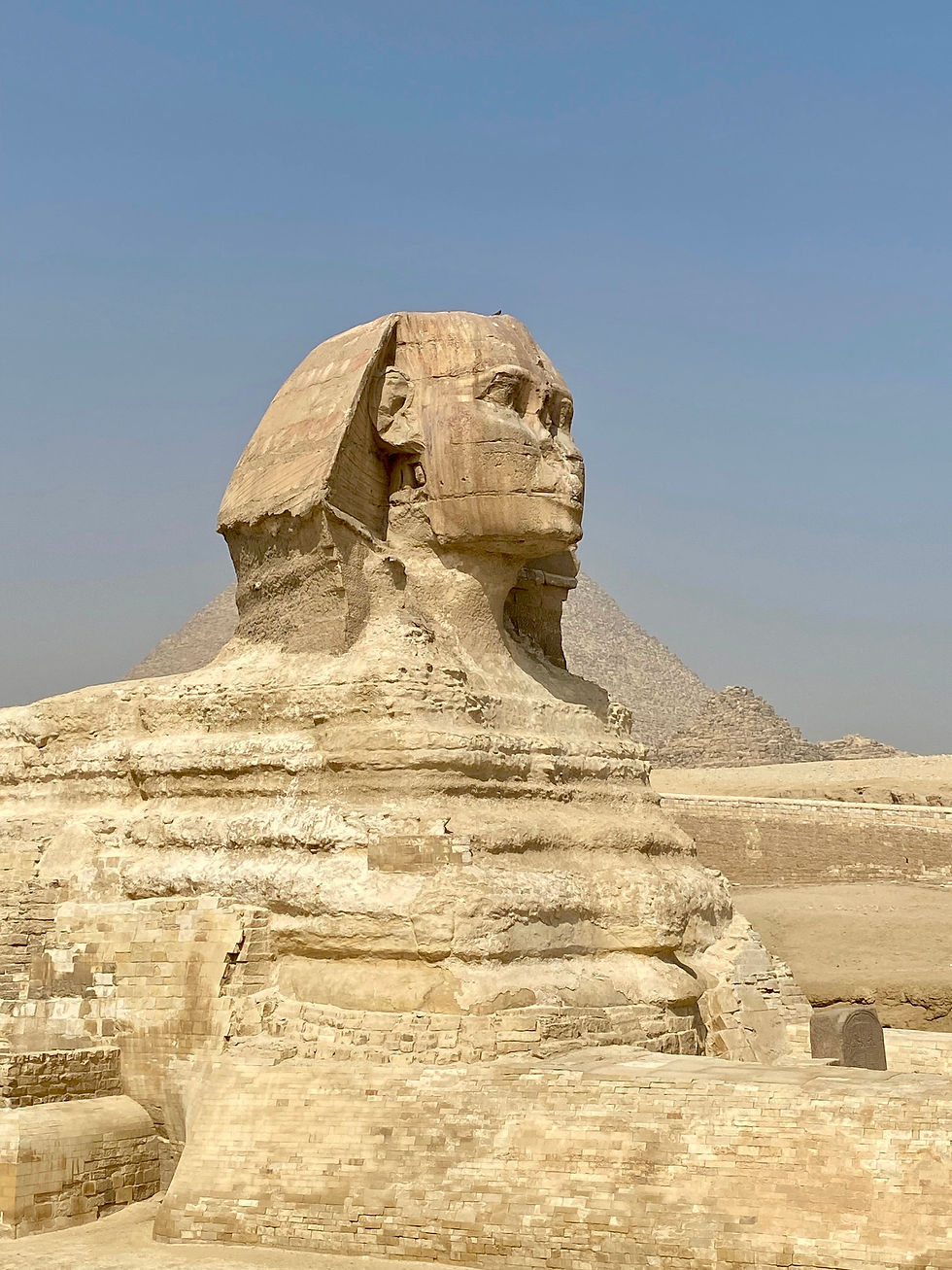On The Move To Ngorongoro
- Andre Schwager

- Sep 5, 2018
- 4 min read
Rising early, we steel ourselves for the five-hour drive through the northern part of Tarangire National Park, via the village of Naitolia, on our way to the Ngorongoro Conservation Area. Our destination is the Neptune Ngorongoro Luxury Lodge, just outside the entrance to the park. It will serve as our home base to explore the Ngorongoro Caldren.
But first, we enjoyed breakfast, took some final photos of the Tree Top Lodge, and said goodbye to the Maasai staff….yup, they’re all very tall! As we walked towards our safari truck, we were stopped and ushered back into the lodge. The Maasai warriors fetched their six-foot spears and moved towards the crackling of branches in the brush.

Roselie and Mel in front of the Tree Top Lodge

Maasai members of the Tree Top Lodge team
Moments later we spotted an adult elephant walking along the pebbled walkway towards our toilet building. He moved very stealthily, stopping occasionally to break off a tree branch or bush as a little morning snack. After approaching the deck of the lodge to within 15 feet, he stared at us, then turned slowly and moved away. As he gracefully went his way, one of the guides told us that an elephant’s feet are extremely sensitive. They communicate with each other over great distances via seismic signals picked up by their feet. When an elephant vocalizes, the sound waves travel through both the air and the ground. The signals through the ground are able to travel much greater distances than sound through air. Their seismic sensors are so sensitive that they are able to detect an earthquake earlier than any other animal.

Elephant invading our camp
Settling into our seat-of-choice in the safari vehicle (convinced that the one we pick today is definitely going to be more comfortable than yesterday’s choice), we were off again.

Donna is ready to roll!
Just a few minutes out, we stopped to enjoy the beauty of a Balboa tree against a gray, cloud-covered sky, its far-reaching branches embracing a small herd of wildebeests grazing around its base. It seemed that every turn, every dip, every rise in the road presented yet another wonder in wildlife.

Balboa tree offering an embracing shelter to wildebeests
Gazelles, guineafowl (wild chicken…no, we don’t eat these), zebras, Cape buffalos, wildebeests, and unusual birds such as the superb starling and saddle-billed stork.

A Saddle-Billed Stork enjoying the marshland

Vultures on the hunt for some prey morsels

A jackal waiting for his turn at the leftovers
Once we exited the park, we found our way to the paved road we had been on a few days earlier. Following a short, boxed lunch at a roadside stop, we continued on our way to our next lodge. The Neptune lodge was clearly a step up from what we had experienced so far. While not unusual to what you might find elsewhere in the world, after 4 days in the bush a welcome luxury – great lighting in each cottage, a fireplace lit every evening, and enough hot water to truly indulge.
The day-long drive was a perfect opportunity for Daniel to talk about the culture of the region. The Tanzanian region was conquered by Germany in the 19thcentury and absorbed into German East Africa. Following Germany’s loss in WWI, the Paris Peace Conference granted the area to Britain. However, Belgium strongly objected. After further negotiations, the two parties agreed that the Tanzania portion would be given to Britain while the remaining parts of German East Africa, Rwanda, and Burundi, would go to Belgium.
As Daniel described the local culture, while there are 125 ethnic groups in Tanzania with a total population of 55 million, only two of them are dominant. The Luo and the Bantu. The Luo of Tanzania number about 400,000 and the larger Bantu group number around 45 million. The Luo’s economic drivers originated in fishing, while the Bantus’ driver was based on agriculture. Both were early converts to Christianity during the British colonization period. The Luo people were the first beneficiaries of schools run by Christian missionaries. Daniel’s thesis was that they adopted and emulated many of British traits and behaviors. They were anointed as the British government’s primary pool of local talent and given administrative and governing roles. This gave the Luo an advantage over the other ethnic groups.
British rule ended in 1961. With independence came the strategic initiative to educate all children. A great foresight! Today, all are required to attend school. As we drove through villages and towns, the roads were lined with children dressed in school uniforms on their way to or from school. No doubt this will have a huge impact on the future of the country. Another very interesting and noteworthy tribe is the nomadic Maasai. They are facing a unique set of challenges as they move forward on a course to modernize and assimilate. I will write about them later as I learn more.
In reflecting on what I’ve experienced to date, I am again fascinated by this continent, the countries, the cultures, the people and their lives. My attention has again been hijacked, as it was in my last trip to Africa, by the history and beauty of the people. What a gift!





Comments